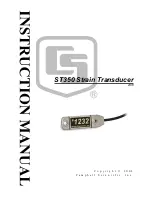
31
All setting levels are post antenna, based on use with a 5dBi antenna.
Broadcast Power, Antennas, and Range
With standard supplied antennas, correctly polarized and in a clear line-of-sight setting, the
typical range for SHoW DMX Neo systems set at full power is rated at 100 meters indoors / 500
meters outdoors. Actual maximum range may vary, based on site conditions, but these
distances are typically achievable with good fidelity.
Lowering broadcast power will not automatically reduce range. In cases with a high level of
multipath interference, lowering the power can actually improve range.
Antennas are part of the power equation. As noted above, SHoW DMX Neo’s power ratings are
based on use with a 5dBi antenna. If a more powerful antenna is used, the emitted power will
go up. Each increase of 3dB in antenna rating effectively doubles the broadcast power of the
system. In addition, the broadcast pattern of the antenna can have a big effect on range.
Directional antennas focus the RF energy in a limited beam that can be pointed, putting more of
the RF energy on the targets. This not only improves the efficiency of the RF delivery, in
addition it improves the system’s ability to reject interference coming from other directions. High
power directional antennas can greatly increase range and can improve rejection of
interference.
Adaptive Spread Spectrum Frequency Hopping (AFHSS)
Adaptive frequency hopping reduces interference by determining which channels in the hopping
pattern are having problems and then replacing those channels with channels held in reserve.
Neo’s AFHSS protocol tests and updates the valid hopping channel list constantly, to manage
changes in the RF environment. Note that because of FCC rules, the AFHSS mode must use
the full bandwidth. Since the Neo Adaptive mode is triggered to adapt by interference with its
broadcast, it may not adapt away from activity that doesn’t interfere with the Neo broadcast, and
so Adaptive mode may not provide as much protection to other systems as one or more of the
other methods. SHoW DMX Neo offers four AFHSS patterns, allowing up to four universes of
wireless DMX in the same system.
All of these features can be combined with different antennas to further improve reception and
reduce interference.
About SHoW ID
CTI’s SHoW ID system organizes most of the SHoW DMX RF features into a set of simple
settings that allow you to match your transmitter to your receiver(s) and to quickly select Neo, or
Neo Adaptive, or Classic broadcast modes, as well as Full or Limited Bandwidth and Hopping
pattern settings (in Neo or Classic modes).
SHoW DMX Neo Technology provides 16 different FHSS hopping patterns in each bandwidth
setting (Full, Limited Low Wi-Fi 1-6, Limited Mid Wi-Fi 5-9, and Limited High, Wi-Fi 7-11) for a
total of 64 combinations of each FHSS mode supported (SHoW DMX Neo Mode, SHoW DMX
Classic Mode). Each combination of hopping pattern and bandwidth setting in each mode is
assigned a unique SHoW ID. In addition, SHoW DMX Neo offers four different Adaptive
















































